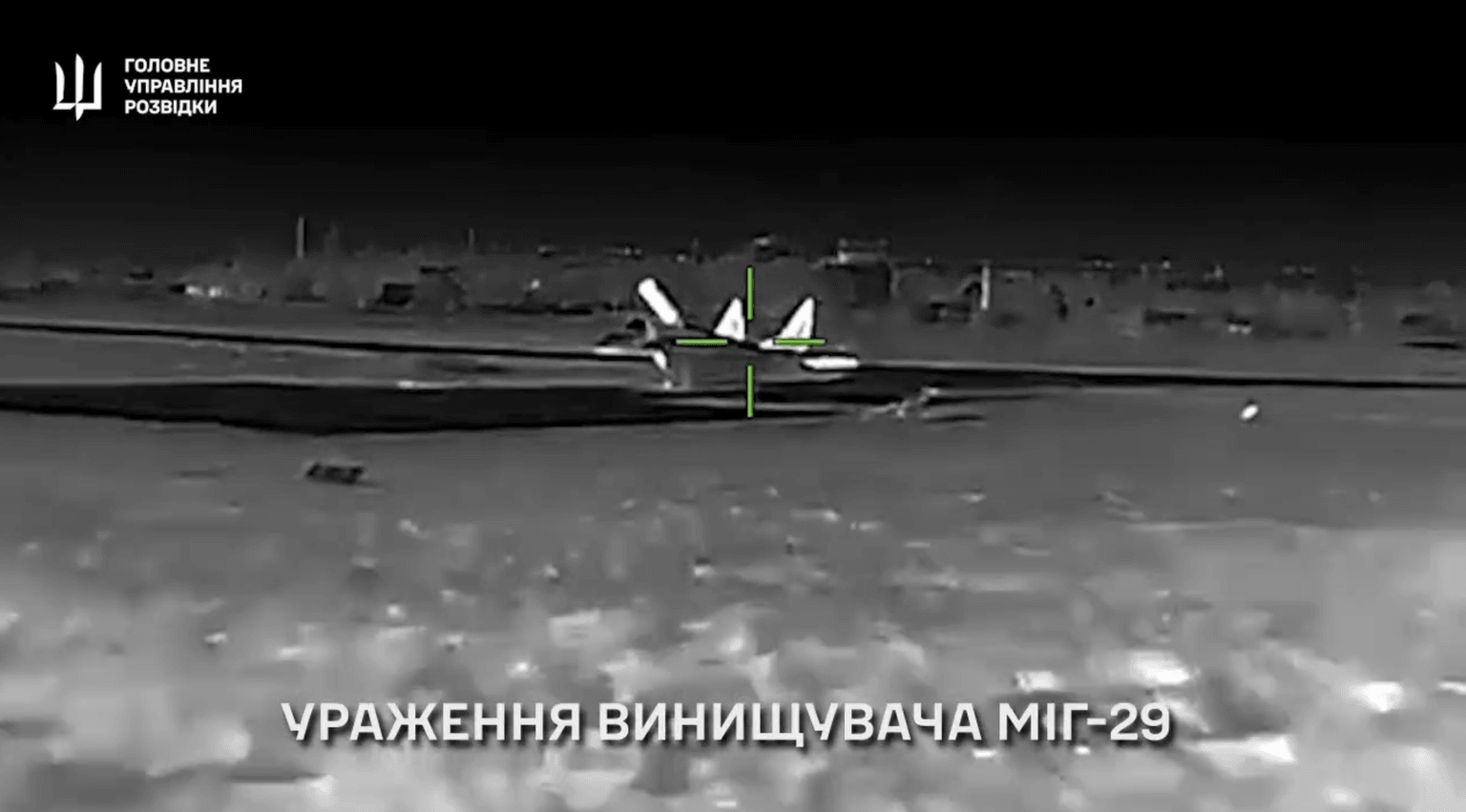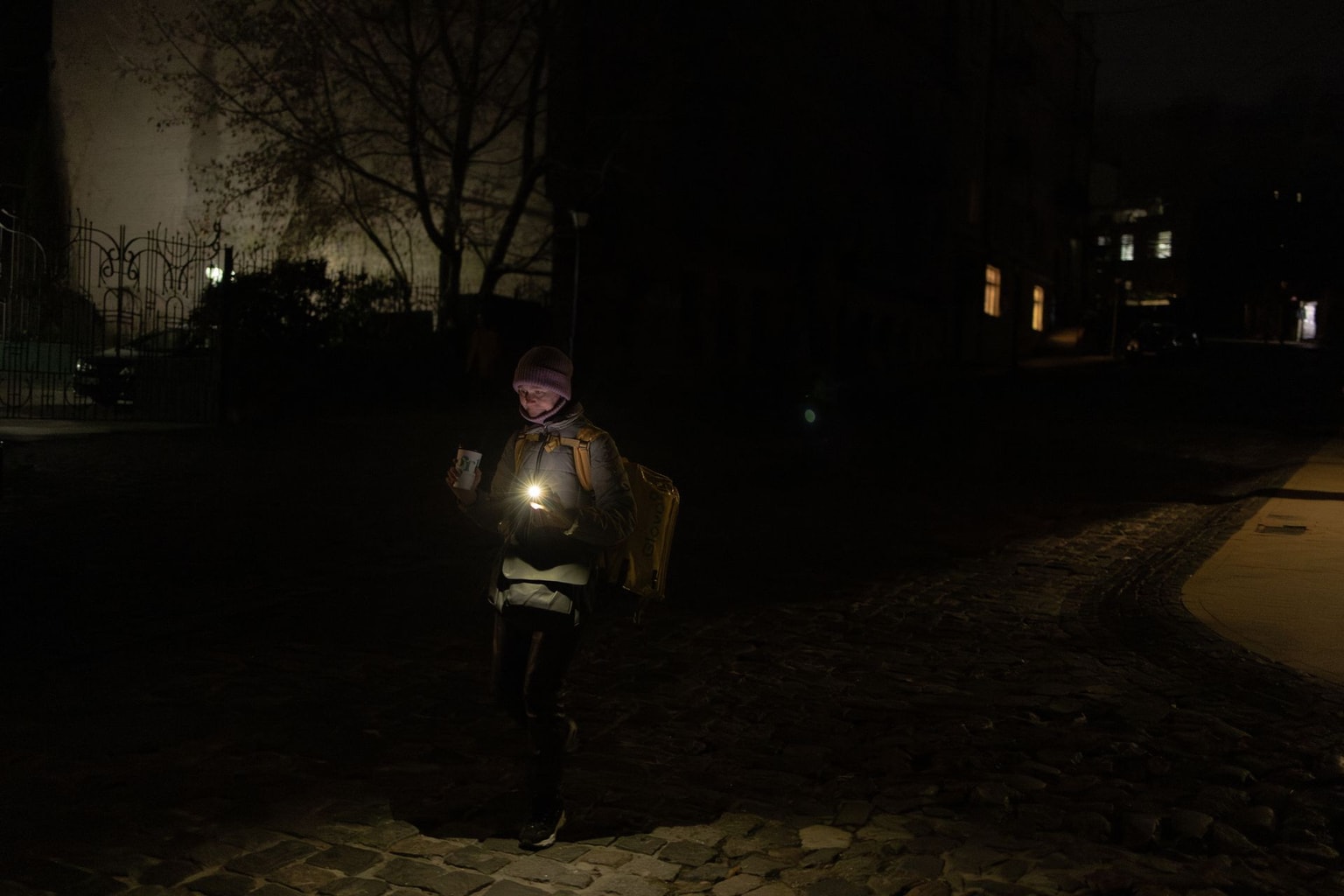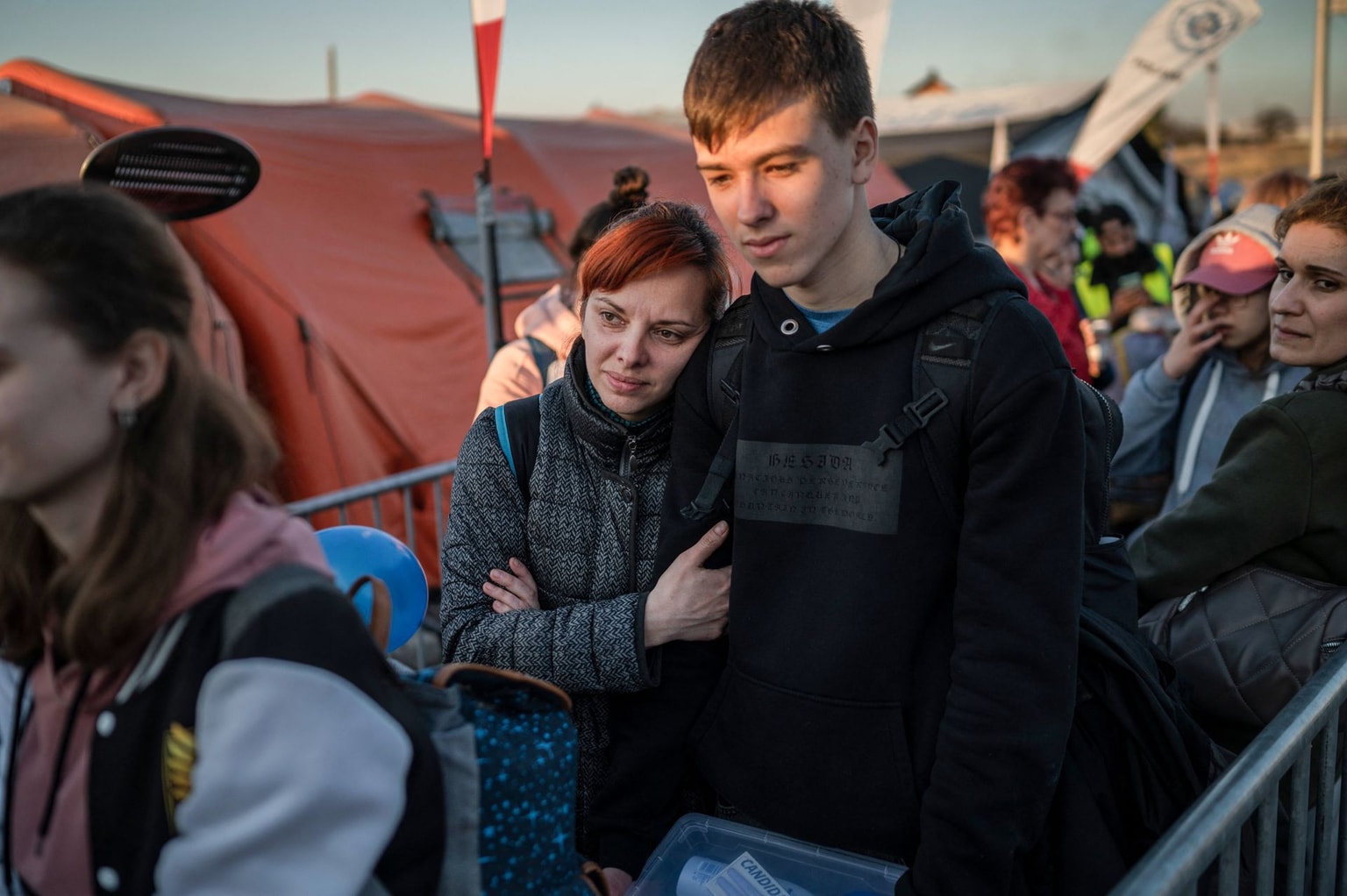
Opinion: Putin’s economic gamble is a ticking time bomb for Russia’s future
Despite the apparent resilience of Russia's economy, Putin’s war comes at a high economic cost. Not only does it require today’s Russians to live a worse life than they otherwise would have done; it also condemns future generations to the same.
Russian President Vladimir Putin gestures during the plenary session of the 2024 Russian Energy Week on Sep. 26, 2024, in Moscow, Russia. (Contributor/Getty Images)
Two and a half years after Russian President Vladimir Putin ordered a full-scale invasion of Ukraine, the Russian economy seems like a riddle wrapped in an enigma of competing narratives. If you want to argue that the economy has been hobbled by Western sanctions, by the Kremlin’s prioritizing of military spending over everything else, and by successful Ukrainian drone attacks on Russian oil refineries, you can find plenty of evidence to support your view.
But if you want to highlight the Russian economy’s resilience by pointing to domestic businesses’ adaptability or consumers’ ability to substitute domestic copycats for imported products, your argument cannot be easily dismissed.
In fact, the Russian economy is not doing well. Sanctions have indeed hurt, and Ukrainian drone strikes really have caused disruptions. Taking a long-term perspective, the economy is moving backward in many sectors, and the recently announced dramatic increase in war spending is clearly unsustainable in the long run. At the same time, Russia is nowhere close to the economic “collapse” that many commentators predicted and hoped for, and if Putin continues with his war effort – as seems likely – the economy could turn out to be the least of his troubles.
Potemkin dynamism
An economy in serious trouble would have high unemployment and high inflation. Yet in terms of jobs, the Russian economy is doing well, producing levels of employment unseen since Soviet times, when working was mandatory for able-bodied adults. There are two reasons for this: the war has killed or wounded hundreds of thousands of would-be workers and caused about a million more people to leave the country; and the government is spending massively on military production.
For her part, Elvira Nabiullina, the head of the Russian central bank, recently referred to the current state of affairs as “significant overheating.” But this usage is highly unconventional. In normal circumstances, “overheating” would refer to unhealthily high employment owing to abnormally fast output growth, which might in turn reflect a market bubble or excessive government stimulus. In Russia today, however, the labor-force losses due to the war and mass emigration are higher than new employment, indicating that the main reason for “overheating” is the fall in the labor supply, rather than an increase in demand for labor.

This is also the main reason for the accelerated wage growth recorded in the first half of the year, with real wages surging by a whopping 8.1% year-on-year in July. Russia’s seemingly excellent labor-market data are, in fact, a cause for concern.
Meanwhile, annual inflation this year has approached 10%, which is higher than in any developed economy, but not remarkably so. What is remarkable is that the Russian central bank’s key interest rate recently increased to 19%.
These two numbers imply that anyone borrowing money at the market rate (which is typically a couple of points above the central bank’s policy rate) must be extremely optimistic about their expected profit margin, or that inflation can be expected to increase sharply in the coming months. But even if persistently high inflation expectations are not allowing the central bank to cut rates, that is only part of the story.
Another reason for the unusual divergence of the policy rate and the inflation rate is the increasing volume of subsidized credits that the government is using to support military production. Such subsidies are effectively transfers of taxpayers’ wealth to the owners of military industrial enterprises – that is, to Putin’s cronies.
Thus, the market interest rate is playing an ever-diminishing role in economic activity, and this, together with the tight labor market, is limiting the central bank’s ability to fight price increases driven by factors such as trade sanctions or increases in world oil prices. Even if inflation is not yet very high, it is already highly persistent.
The anatomy of resilience
Still, those hoping that a collapse of the Russian economy will put an end to Putin’s criminal war have repeatedly underestimated how much an economy can adjust in the face of adverse circumstances. Russian industrial production has been boosted significantly by the increased military spending, with output in war-related industries up about 60% in the first half of 2024 compared to the second half of 2022.
But the critical element in this form of government support is the public’s willingness to accept less spending on health, education, and civilian infrastructure. For the poor, the effect of decreased public spending has been mitigated by increased budget transfers to soldiers and their families. By some estimates, these transfers exceeded 1.5% of Russian GDP from July 2023 to June 2024 (7.5-8.2% of total spending), with the bulk taking the form of post-mortem payments to soldiers’ families.
Ordinary Russians’ willingness to sacrifice their own material well-being is especially important considering that Western sanctions and business withdrawals resulted in a dramatic loss of access to imported products. Some goods became inaccessible – cars made by major Western brands like Mercedes and Ford are a prime example – while others, such as Apple iPhones, started to sell at a significant premium.

Many goods that were previously exported from the West are being replaced by lower-quality products from other countries, China chief among them, and through import substitution, which results in consumers paying higher prices for lower-quality domestically produced goods. In other words, the Russian people are making a material contribution to the prosecution of Putin’s war through their willingness to pay more for less.
Importantly, this fall in living standards is not reflected in the headline GDP number, because imports are not a part of GDP, whereas import-substituting production is. When an economy experiences such a rapid decoupling from international trade, GDP will not fully account for what people are experiencing on the ground.
Borrowing from the future
The trade and financial sanctions that were introduced after the invasion in February 2022, and which have since increased gradually, have certainly reduced the Kremlin’s ability to wage war, as have the ever-tightening secondary sanctions on Chinese, Indian, Turkish, and other intermediaries. Such measures raise the price of much-needed components or serve as an additional tax on financial transactions, thus reducing the government’s revenue.
But none of these sanctions can force the flow of goods and money to stop completely, owing to the laws of the market: when a transaction becomes more costly, the profit margin on each successful transaction rises, encouraging new intermediaries to come up with new workarounds and loopholes. Managing these transactions has become a lucrative business for Putin cronies – almost as lucrative as military production. Still, these solutions are costly, and the cost is borne by ordinary Russians. Their willingness to bear the economic burden is what ultimately matters, and it does not yet appear to have reached its limit.
Another source of war finance is what amounts to borrowing from the future. But this is not carried out directly; in fact, Russia’s government cannot borrow on international credit markets, and it struggles to borrow at home, even at high interest rates. Instead, it comes from a dramatic fall in government spending on education and healthcare in the most recent budgets. Even more important, Putin’s borrowing from the future takes the form of a gradual, yet pervasive, dismantling of the market institutions that the Russian people paid such a high price to acquire during the reforms of the 1990s. These institutions provided the foundation for the spectacular growth of the early 2000s, and they have been bolstering the Russian economy’s resilience in the face of Western sanctions since 2014.
To wage war on the scale seen in Ukraine, however, Putin’s regime needs to assert far more control over the economy than these institutions allow. Yet the Kremlin must tread carefully so that economic activity is not hurt too much. That is why it has not formally introduced price controls, though it does force companies not to raise prices too fast or too steeply. In response to rising energy prices, the government introduced export restrictions on gasoline and other oil products, which then expanded the need for price controls to other markets.
Another oil-rich country ruled by a dictator took a similar path two decades ago. Under President Hugo Chávez and his successor, Nicolás Maduro, Venezuela introduced price controls that eventually resulted in an economic catastrophe. The current, collapsed state of the Venezuelan economy is perhaps one of the reasons why Russian government economists have quietly resisted Putin’s drive for more control.
In July 2023, Putin ordered the nationalization of the assets of two major Western brands, yogurt maker Danone and brewer Carlsberg, while Heineken sold its operations to a local firm for one euro. As with price controls, the government proceeded carefully in each instance. Initially, the law authorizing nationalizations was passed to prevent firms from closing down their businesses after the 2022 invasion. If a Western firm wanted to exit the Russian market, it could sell its assets and operations, albeit at a huge loss relative to pre-war market prices and subject to an exorbitant additional tax.
Prior to the nationalization law, however, nothing prohibited a private firm from shutting down its Russian business instead of selling it. Yet even after the law’s passage, the nationalization of Danone and Carlsberg’s businesses in Russia came as a surprise, given that neither company was shutting down its operation; instead, they were busy negotiating a sale. Presumably, the targeted expropriations were a signal to other firms that might consider exiting. With their potential sale price further depressed, they have a greater incentive to stay.
The government’s ability to expropriate businesses at will solves a major wartime problem by blocking valuable firms’ exit. Yet it comes at the cost of a core economic institution, and as economists Daron Acemoglu and James A. Robinson explain, such institutional erosion is ultimately the key to understanding why nations fail. Investing massively in military production and simultaneously dismantling market institutions may strengthen Putin’s hand in the short term, but it sets a time bomb under longer-term economic development.
No country in the modern era has achieved sustained economic growth without becoming increasingly open to international trade. Whenever the Ukraine war ends and Russia returns to international trade (beyond raw materials), all the nationalizations of recent years will come back to haunt it. Putin’s war not only imposes on today’s Russians a worse life than they otherwise would have had. It also condemns future generations.
Editor’s Note: Copyright, Project Syndicate. This article was published by Project Syndicate on Oct. 4, 2024, and has been republished by the Kyiv Independent with permission.The opinions expressed in the op-ed section are those of the authors and do not purport to reflect the views of the Kyiv Independent.










